Tin Whisker Electrical Short Circuit Characteristics ... - NEPP - Nasa
Tin Whisker Electrical Short Circuit Characteristics ... - NEPP - Nasa
Tin Whisker Electrical Short Circuit Characteristics ... - NEPP - Nasa
Create successful ePaper yourself
Turn your PDF publications into a flip-book with our unique Google optimized e-Paper software.
46 IEEE TRANSACTIONS ON ELECTRONICS PACKAGING MANUFACTURING, VOL. 32, NO. 1, JANUARY 2009<br />
Fig. 11. Bright field TEM image of the polycrystalline tin whisker and nomenclature used to identify the various regions (A-D). Regions A–C were nearly identical<br />
with one another, while region D was misoriented by approximately 2 with region A (NASA/UCF).<br />
vealed what appeared to be a polycrystalline whisker (refer to<br />
Fig. 1). In order to determine whether the whisker was polycrystalline,<br />
a thin section was prepared for TEM analysis as shown<br />
in Fig. 11. This sample is from a different section of the same tin<br />
whisker shown in the Fig. 1, but is rotated as evident by the location<br />
of the deposited platinum layer. The selected area diffraction<br />
patterns (SADPs) were taken at four site specific regions,<br />
labeled A, B, C, and D as shown in Fig. 11.<br />
The SADPs obtained from regions A–D indexed to the tetragonal<br />
crystal structure of tin in the beam direction (refer<br />
to Fig. 11). Region D was misoriented approximately 2 with<br />
respect to region A in the (121) direction. Regions A–C were<br />
nearly identical with one another.<br />
High-resolution TEM imaging, shown in Fig. 12, was used<br />
to image an amorphous region between uniform crystal lattices<br />
of regions A and B, which clearly delineates a grain boundary<br />
between the crystals in the polycrystalline tin whisker. Additionally,<br />
X-ray energy dispersive spectroscopy (EDS) was used<br />
to verify that there were no compositional differences between<br />
the regions, all were composed of pure tin (Sn). The polycrystalline<br />
structure of the studied whisker is shown by the contrast<br />
in regions A–D in the bright field TEM image in Fig. 11, the<br />
misorientation of region D with respect to region A shown in<br />
the SADPs, and the amorphous region between the crystals in<br />
the high-resolution TEM image in Fig. 12.<br />
G. Card Guide Cross Sections Using a FIB<br />
FIB analysis of two card guides was used to determine the<br />
grain size and thickness of the tin plating. Ion channel imaging<br />
was used to acquire images showing distinct grains based on<br />
Fig. 12. High-resolution TEM image of the amorphous region in the polycrystalline<br />
tin whisker between the uniform crystal lattices of regions A and<br />
B. The amorphous region is a low-angle grain boundary (NASA/UCF).<br />
crystal orientation contrast as shown in Fig. 13. Using a modified<br />
line-intercept method, the average grain size for the card<br />
guide from ATVC S/N 31 shown in Fig. 13 was estimated to be<br />
0.350 m (350 nm), and the average grain size for the card guide<br />
from ATVC S/N 33 was estimated to be 0.290 m (290 nm),<br />
Authorized licensed use limited to: University of Maryland College Park. Downloaded on January 12, 2009 at 16:34 from IEEE Xplore. Restrictions apply.



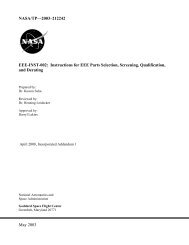

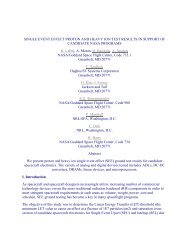
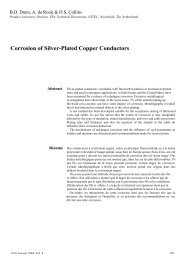
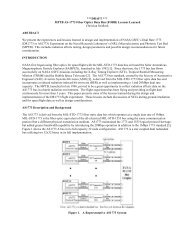

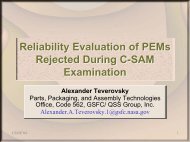
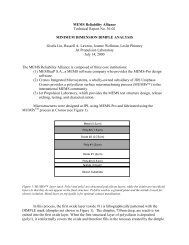
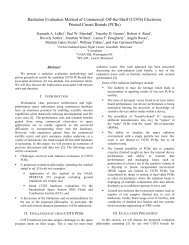
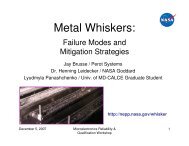

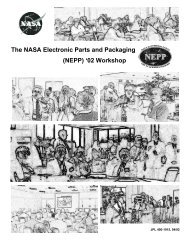
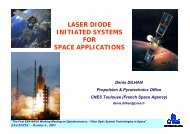
![mil-std-2223 [test methods for insulated electric wire] - NEPP](https://img.yumpu.com/4036001/1/190x249/mil-std-2223-test-methods-for-insulated-electric-wire-nepp.jpg?quality=85)